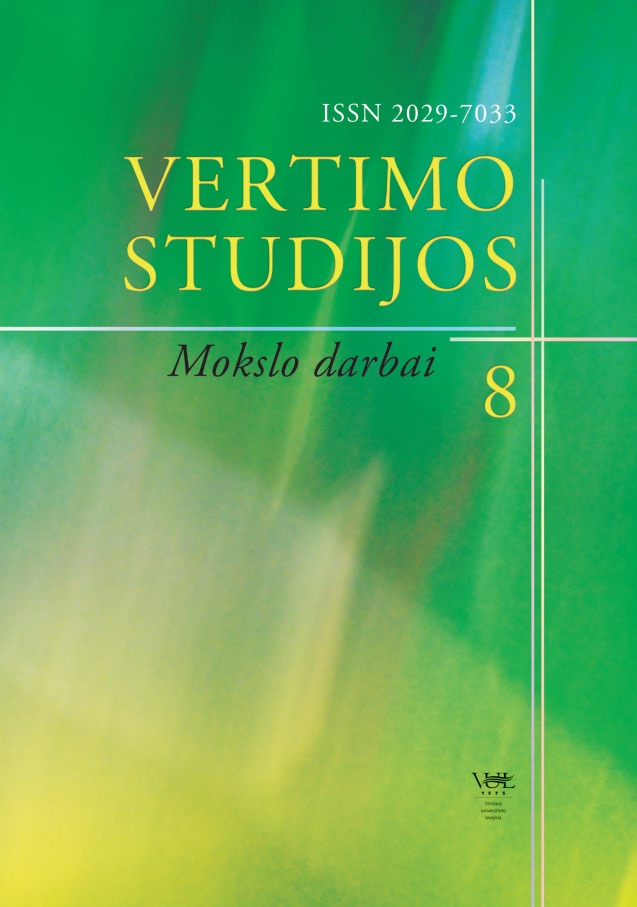INTERTEKSTUALUMO VERTIMO ŽODŽIU STRATEGIJOS EUROPOS PARLAMENTE
STRATEGIES FOR THE INTERPRETATION OF INTERTEXTUALITY IN THE EUROPEAN PARLIAMENT
Author(s): Neringa TerleckaitėSubject(s): Applied Linguistics, Evaluation research, Translation Studies
Published by: Vilniaus Universiteto Leidykla
Keywords: European parliament; Intertextuality; English translation;
Summary/Abstract: The concept of intertextuality is understood, in the broadest of terms, as a relationship of texts; its main function is to create additional meaning. Intertextual elements include direct and indirect quotations, references, proper and stereotypical allusions. The article is based on an analysis of short political speeches (1 to 3 minutes) in Lithuanian given in the European Parliament and their interpretation into English. The main objective is to determine what types of intertextuality are most common and what interpretation strategies are used. Analysis of the speeches has revealed that the majority of intertextual elements are multicultural (87%), which means that they are easily recognised and understood in the context of the EU institutions. The most common types of intertextual elements are references (55% of the cases analysed) and allusions (41%). There were only a few direct and indirect quotations (4%). It was determined that literal translation was the most common interpretation strategy, whilst omission was seldom used. In some cases the type of intertextual elements were seen to have influenced the interpretation strategy: standard translation was more often used when interpreting references, whilst for allusions standard translation was used only twice.
Journal: Vertimo studijos
- Issue Year: 8/2015
- Issue No: 8
- Page Range: 39-53
- Page Count: 15
- Language: Lithuanian

